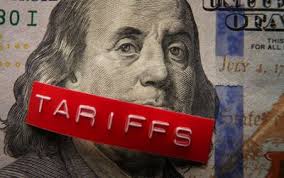
Economic experts and recent research warn that the wave of U.S. tariffs poses a threat to the dollar's position as the world’s primary reserve currency. However, they argue that despite serious risks, current tariff levels have not yet crossed the threshold that would erode the dollar’s dominance.
What Research Identifies as Key Risks to the Dollar’s Status
Reserve currency status comes with special advantages for the United States—lower borrowing costs, steady global demand for dollars, and the ability to attract foreign capital. Research indicates that these advantages depend heavily on open trade flows. When import costs rise due to tariffs, and when trading partners respond with their own trade barriers, the foundational trade linkages that support the dollar’s safe-haven and global reserve role begin to weaken.
A major concern among economists is that high tariff levels reduce foreign demand for U.S. goods, and by extension diminish the flow of dollars into U.S. financial assets. If other countries stop accepting or holding as many dollars—or settle trade in alternative currencies—the net benefit of being a reserve currency starts to erode. Some research suggests this could raise U.S. interest rates, reduce U.S. firms’ global valuation, and weaken wage growth.
Another critical risk involves investor perceptions. The dollar’s appeal in times of global stress comes from its ability to appreciate when other currencies fall. When trade policies or protectionism disrupt expectations of stability, markets respond. In past episodes, large tariff announcements have triggered simultaneous drops in U.S. stocks, Treasury bonds, and the dollar itself—counter to the usual pattern of flight to safety into dollar assets. That behavior highlights how fragile confidence can be.
Why Experts Believe Current Tariffs Fall Short of a Breakpoint
While the risks are real, researchers emphasize that U.S. tariffs so far have not crossed into “catastrophic territory.” Analyses place the current effective U.S. tariff rate at around **17-18%**. In contrast, models show that only much higher rates—on the order of **26% or more**, especially if broadly applied—would pose a strong threat to the dollar’s reserve status. Below that tipping point, the dollar may weaken but remains resilient.
The resilience stems in part from deep financial markets and entrenched demand for dollar-denominated assets. Treasuries remain among the most liquid and trusted safe-haven instruments globally. Even when the dollar depreciates in nominal or trade-weighted terms, the relative size, depth, and trust in U.S. financial institutions provide a buffer.
In addition, experts say that retaliation by trade partners or expectations of it dampens the detrimental effects. When trading partners impose counter-tariffs or when markets foresee such responses, the damaging impact of tariffs on the dollar is magnified—but even then, total reversal of status appears distant under current conditions.
How Tariffs Could Weaken the Dollar’s Foundations
Tariffs affect the dollar in multiple, interconnected ways. First, they reduce the volume of trade. Because foreign actors need dollars largely in order to trade with the U.S., lower import volumes mean fewer dollars flowing outward and less need for foreign holders to accumulate them. This, in turn, can reduce overseas demand for U.S. Treasury securities, which depends on investors needing safe, dollar-denominated stores of value.
Secondly, higher tariffs tend to drive up input costs for U.S. businesses that rely on imports. That raises inflation pressures, which may force the Federal Reserve to raise interest rates. Higher rates tend to increase debt burdens and weaken the attractiveness of holding U.S. assets if yields become more volatile or less favorable relative to other jurisdictions.
Third, supply chain disruptions and trade retaliation can alter where businesses produce, how they price products, and how they manage risk. If companies shift production to avoid tariff costs or begin settling trade in other currencies because of uncertainty or currency exposure, that reduces network effects that have long reinforced the dollar’s dominance.
Furthermore, investor behaviour plays a large role. If markets begin to believe the U.S. is moving toward prolonged protectionism, they may reassign risk, reduce exposure to long-term Treasury bonds, or demand higher risk premiums. The combination of weaker confidence and reduced foreign capital inflows can undermine the “safe-haven” perception that anchors the dollar’s status.
Broader Observations and What to Watch Going Forward
Economists caution that while the dollar’s reserve role remains intact, the warning signs should not be dismissed. Key indicators include: the size and breadth of U.S. tariffs; the extent and timing of retaliation by trade partners; fluctuations in Treasury yields; changes in foreign holdings of dollar-denominated assets; and alternative currencies’ presentation as viable reserve options, especially the euro.
Some institutions predict further dollar depreciation in the near term due to tariffs, economic uncertainty, and subdued yields, yet stop short of forecasting an imminent collapse of reserve status. The general view is that weakening is likely incremental and uneven—more pronounced in some sectors and regions than others—but not yet a full reversal.
What remains decisive is whether trade openness is preserved. Sustained protectionism would erode economic linkages that ensure dollars flow across borders, weakening both investor confidence and market structures. Until or unless tariffs reach levels significantly above current rates, while being broadly applied and met with retaliation, the dollar’s reserved role is expected to endure—though less unchallenged than before.
(Source:www.reuters.com)
What Research Identifies as Key Risks to the Dollar’s Status
Reserve currency status comes with special advantages for the United States—lower borrowing costs, steady global demand for dollars, and the ability to attract foreign capital. Research indicates that these advantages depend heavily on open trade flows. When import costs rise due to tariffs, and when trading partners respond with their own trade barriers, the foundational trade linkages that support the dollar’s safe-haven and global reserve role begin to weaken.
A major concern among economists is that high tariff levels reduce foreign demand for U.S. goods, and by extension diminish the flow of dollars into U.S. financial assets. If other countries stop accepting or holding as many dollars—or settle trade in alternative currencies—the net benefit of being a reserve currency starts to erode. Some research suggests this could raise U.S. interest rates, reduce U.S. firms’ global valuation, and weaken wage growth.
Another critical risk involves investor perceptions. The dollar’s appeal in times of global stress comes from its ability to appreciate when other currencies fall. When trade policies or protectionism disrupt expectations of stability, markets respond. In past episodes, large tariff announcements have triggered simultaneous drops in U.S. stocks, Treasury bonds, and the dollar itself—counter to the usual pattern of flight to safety into dollar assets. That behavior highlights how fragile confidence can be.
Why Experts Believe Current Tariffs Fall Short of a Breakpoint
While the risks are real, researchers emphasize that U.S. tariffs so far have not crossed into “catastrophic territory.” Analyses place the current effective U.S. tariff rate at around **17-18%**. In contrast, models show that only much higher rates—on the order of **26% or more**, especially if broadly applied—would pose a strong threat to the dollar’s reserve status. Below that tipping point, the dollar may weaken but remains resilient.
The resilience stems in part from deep financial markets and entrenched demand for dollar-denominated assets. Treasuries remain among the most liquid and trusted safe-haven instruments globally. Even when the dollar depreciates in nominal or trade-weighted terms, the relative size, depth, and trust in U.S. financial institutions provide a buffer.
In addition, experts say that retaliation by trade partners or expectations of it dampens the detrimental effects. When trading partners impose counter-tariffs or when markets foresee such responses, the damaging impact of tariffs on the dollar is magnified—but even then, total reversal of status appears distant under current conditions.
How Tariffs Could Weaken the Dollar’s Foundations
Tariffs affect the dollar in multiple, interconnected ways. First, they reduce the volume of trade. Because foreign actors need dollars largely in order to trade with the U.S., lower import volumes mean fewer dollars flowing outward and less need for foreign holders to accumulate them. This, in turn, can reduce overseas demand for U.S. Treasury securities, which depends on investors needing safe, dollar-denominated stores of value.
Secondly, higher tariffs tend to drive up input costs for U.S. businesses that rely on imports. That raises inflation pressures, which may force the Federal Reserve to raise interest rates. Higher rates tend to increase debt burdens and weaken the attractiveness of holding U.S. assets if yields become more volatile or less favorable relative to other jurisdictions.
Third, supply chain disruptions and trade retaliation can alter where businesses produce, how they price products, and how they manage risk. If companies shift production to avoid tariff costs or begin settling trade in other currencies because of uncertainty or currency exposure, that reduces network effects that have long reinforced the dollar’s dominance.
Furthermore, investor behaviour plays a large role. If markets begin to believe the U.S. is moving toward prolonged protectionism, they may reassign risk, reduce exposure to long-term Treasury bonds, or demand higher risk premiums. The combination of weaker confidence and reduced foreign capital inflows can undermine the “safe-haven” perception that anchors the dollar’s status.
Broader Observations and What to Watch Going Forward
Economists caution that while the dollar’s reserve role remains intact, the warning signs should not be dismissed. Key indicators include: the size and breadth of U.S. tariffs; the extent and timing of retaliation by trade partners; fluctuations in Treasury yields; changes in foreign holdings of dollar-denominated assets; and alternative currencies’ presentation as viable reserve options, especially the euro.
Some institutions predict further dollar depreciation in the near term due to tariffs, economic uncertainty, and subdued yields, yet stop short of forecasting an imminent collapse of reserve status. The general view is that weakening is likely incremental and uneven—more pronounced in some sectors and regions than others—but not yet a full reversal.
What remains decisive is whether trade openness is preserved. Sustained protectionism would erode economic linkages that ensure dollars flow across borders, weakening both investor confidence and market structures. Until or unless tariffs reach levels significantly above current rates, while being broadly applied and met with retaliation, the dollar’s reserved role is expected to endure—though less unchallenged than before.
(Source:www.reuters.com)





